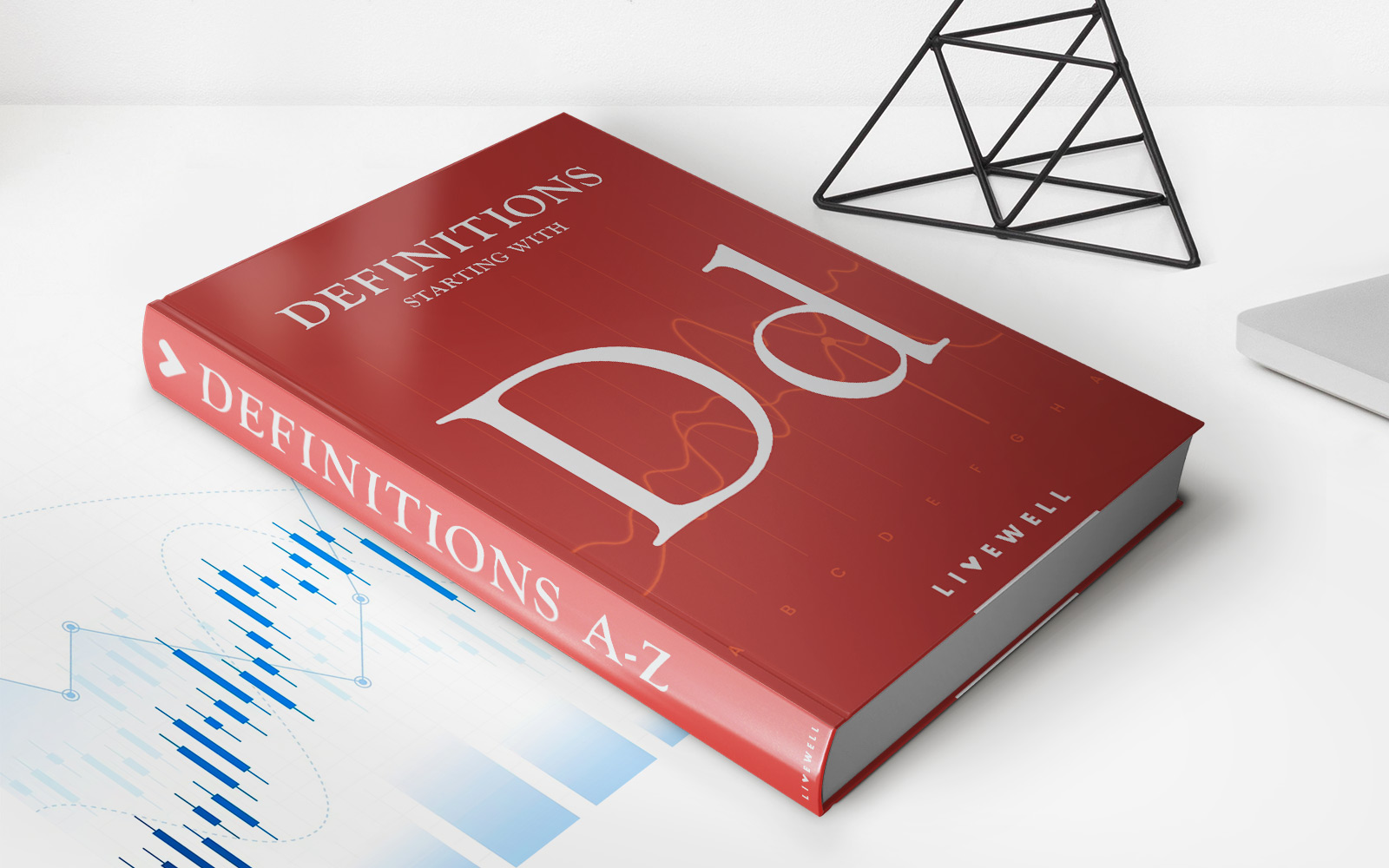Home>Finance>A Student Checking Account Would Be Classified As What Type Of Account According To The Agreement


Finance
A Student Checking Account Would Be Classified As What Type Of Account According To The Agreement
Modified: February 21, 2024
A student checking account is a type of finance account as mentioned in the agreement.
(Many of the links in this article redirect to a specific reviewed product. Your purchase of these products through affiliate links helps to generate commission for LiveWell, at no extra cost. Learn more)
Table of Contents
- Introduction
- Definition of a student checking account
- Classification of a student checking account according to the agreement
- Features and benefits of a student checking account
- Requirements and eligibility for opening a student checking account
- Comparison of a student checking account to other types of accounts
- Limitations and restrictions of a student checking account
- Conclusion
Introduction
Welcome to the world of banking and finance! When it comes to managing your money as a student, having a checking account is a crucial step towards financial independence. A student checking account is specifically designed to meet the unique needs of students, providing them with a convenient and secure way to manage their finances. In this article, we will explore the ins and outs of a student checking account, including its classification according to the agreement, its features, benefits, requirements, and limitations.
As a student, you might be wondering why you need a checking account in the first place. Well, having a checking account offers a myriad of advantages. Firstly, it allows you to deposit and withdraw money whenever you need it, offering the flexibility and accessibility that cash or a savings account may not provide. Secondly, it provides a safe and convenient way to make payments, whether it’s for your tuition fees, textbooks, or daily expenses. Lastly, it helps you develop essential money management skills, such as budgeting and tracking your expenses, which are invaluable as you navigate through your academic journey and beyond.
Now, let’s delve into the specifics of what classifies a student checking account according to the agreement.
Definition of a student checking account
A student checking account is a type of bank account specifically designed for students. It is a financial tool that enables students to manage their money conveniently and efficiently. This type of account typically comes with unique features, benefits, and limitations tailored to meet the financial needs of students.
One of the defining characteristics of a student checking account is that it is usually offered to individuals who are enrolled as full-time students in high school, college, or university. It is an account that recognizes the unique financial circumstances and requirements of students, offering them specific perks and privileges.
Unlike other types of checking accounts, a student checking account often comes with lower or waived fees, such as monthly maintenance fees or minimum balance requirements. This can be especially beneficial for students who may have limited financial resources. Additionally, some student checking accounts offer discounted or no-cost overdraft protection, which can provide a safety net when funds are running low.
Furthermore, a student checking account provides students with access to essential banking services. This includes the ability to deposit and withdraw money, write checks, make online payments, and set up direct deposit for any financial aid or part-time job earnings. Many student checking accounts also offer debit cards, allowing students to make purchases in-store or online, helping them to manage their finances conveniently.
Overall, a student checking account is a financial tool that recognizes the unique needs of students and provides them with the means to manage their money effectively and responsibly. Now that we understand the definition of a student checking account, let’s move on to explore how it is classified according to the agreement.
Classification of a student checking account according to the agreement
When it comes to classifying a student checking account, it is important to refer to the specific terms and conditions outlined in the agreement provided by the financial institution. These agreements may vary from one bank to another, but generally, there are common criteria that help classify a student checking account.
First and foremost, a student checking account is typically available to individuals who meet the eligibility criteria set by the financial institution. This often includes being enrolled as a full-time student at a high school, college, or university. Some banks may require proof of enrollment, such as a valid student ID or verification from the academic institution.
Another key aspect of classification is the age requirement. While different banks may have varying policies, student checking accounts are commonly available to individuals who are 18 years old or older. However, some banks may offer student checking accounts to younger individuals, typically with parental or guardian consent.
Additionally, the duration of eligibility is an important factor in classifying a student checking account. Some banks may offer this account only for a limited period, such as four to six years, coinciding with the typical duration of undergraduate studies. Others may extend the eligibility until graduation, allowing students to continue using the account as they pursue higher education or enter the workforce.
Furthermore, the agreement may outline certain limitations or conditions specific to student checking accounts. These can include transaction limits, such as a maximum number of monthly transfers or withdrawals, or restrictions on the use of certain features, such as mobile banking or international transactions.
It is essential for students to carefully review the terms and conditions of the agreement before opening a student checking account. Understanding the classification and any associated terms will help students make informed decisions about their banking needs and ensure they can fully utilize the benefits and features provided by the account.
Now that we have explored the classification of a student checking account according to the agreement, let’s move on to discover the features and benefits that make this type of account desirable for students.
Features and benefits of a student checking account
A student checking account comes with a range of features and benefits specifically tailored to meet the financial needs of students. Let’s take a closer look at some of the key features and advantages of having a student checking account.
1. Low or no fees: Many student checking accounts waive monthly maintenance fees or have lower fees compared to regular checking accounts. This can help students save money as they manage their day-to-day transactions.
2. Overdraft protection: Some student checking accounts offer overdraft protection, which means that the bank may cover transactions that exceed the available account balance, up to a certain limit. This can prevent students from incurring hefty overdraft fees and provide a safety net for unexpected expenses.
3. Debit card accessibility: Student checking accounts often come with a debit card, allowing convenient access to funds for purchases both in-store and online. This eliminates the need to carry cash and provides a secure payment method.
4. Online and mobile banking: Most student checking accounts offer online and mobile banking services, enabling students to manage their account, view transactions, and transfer funds at their convenience. This provides flexibility and ease of access for students with busy schedules.
5. ATM access: Student checking accounts typically provide access to a wide network of ATMs where students can withdraw cash or make deposits without incurring additional fees.
6. Digital payment options: With the rise of digital payment methods, student checking accounts often support services like mobile payment apps and peer-to-peer payment platforms, making it convenient for students to send and receive money from friends or family.
7. Budgeting tools: Some student checking accounts come with budgeting tools and features to help students track their expenses, set savings goals, and gain financial literacy skills. These tools can be valuable in helping students build good financial habits early on.
8. Building credit: Student checking accounts may also offer opportunities to build credit history. Some banks provide options to link a student’s checking account to a credit card or offer secured credit cards designed for students. These can help establish a positive credit history, which will be beneficial in the future when applying for loans or other financial services.
Overall, a student checking account offers a range of features and benefits that cater specifically to the needs and circumstances of students. It provides a convenient and secure way to manage finances, build financial skills, and prepare for a successful financial future.
Now that we have explored the features and benefits of a student checking account, let’s move on to the requirements and eligibility for opening this type of account.
Requirements and eligibility for opening a student checking account
Opening a student checking account typically requires meeting certain requirements and eligibility criteria set forth by the financial institution. While these requirements may vary slightly from bank to bank, there are some common criteria to be aware of. Let’s dive into the requirements and eligibility for opening a student checking account.
1. Student status: As the name suggests, a student checking account is specifically designed for students. To be eligible, you typically need to be enrolled as a full-time student at a high school, college, or university. Some banks may require proof of enrollment, such as a valid student ID or a letter of acceptance from the academic institution.
2. Age requirements: Most banks require applicants for a student checking account to be at least 18 years old. However, some financial institutions may offer student checking accounts to younger individuals with parental or guardian consent.
3. Identification documents: When opening a student checking account, you will generally need to provide identification documents, such as a valid government-issued ID (e.g., driver’s license, passport) and proof of address (e.g., utility bill, lease agreement). It is always recommended to check with the specific bank regarding their accepted forms of identification.
4. Social Security Number (SSN) or Individual Taxpayer Identification Number (ITIN): In the United States, providing your SSN or ITIN is typically required for the purpose of identity verification and compliance with regulatory guidelines. Make sure to have your SSN or ITIN available when applying for a student checking account.
5. Minimum deposit: Some banks may require an initial minimum deposit to open a student checking account. The amount can vary depending on the financial institution, so it’s important to inquire about this beforehand.
6. Parental consent: For younger students or individuals under the age of 18, parental or guardian consent may be necessary to open a student checking account. This usually involves the parent or guardian being a joint account holder or providing their authorization in person at the bank.
Remember, these requirements and eligibility criteria may vary depending on the bank and your geographical location. To ensure a smooth account opening process, it is always advisable to contact the bank directly or visit their website to confirm the specific requirements and eligibility criteria for a student checking account.
Now that we understand the requirements and eligibility for opening a student checking account, let’s move on to comparing a student checking account to other types of accounts.
Comparison of a student checking account to other types of accounts
When it comes to managing your finances, there are various types of bank accounts to choose from. It’s important to understand the key differences between a student checking account and other types of accounts to determine which one best suits your needs. Let’s compare a student checking account to other common types of accounts.
1. Regular checking account: A regular checking account is the most basic type of account offered by banks. It is available to anyone regardless of their student status. While both regular checking accounts and student checking accounts offer similar features, such as check writing, online banking, and debit cards, student checking accounts may come with specific benefits for students, such as lower fees or discounts.
2. Savings account: A savings account is designed to help individuals save money over time by offering a higher interest rate on deposited funds. Unlike a student checking account, a savings account may have limitations on the number of transactions and withdrawals allowed per month. While a student checking account is ideal for managing day-to-day expenses, a savings account is suitable for accumulating savings and earning interest on the deposited funds.
3. Money market account: A money market account is similar to a savings account, but it typically offers a higher interest rate and may require a higher minimum deposit. Money market accounts may also have limitations on the number of transactions and withdrawals, similar to a savings account. These accounts can be a good option for individuals looking to earn a slightly higher interest rate while still maintaining easy access to their funds.
4. Certificate of Deposit (CD): A CD is a time-bound deposit account that offers a fixed interest rate for a specified period. Unlike a student checking account, which allows frequent access to funds, a CD locks the money up for a predetermined term, such as six months or one year. This type of account is beneficial for individuals looking to earn a higher interest rate on their savings but are willing to commit to a specific term without needing immediate access to the funds.
5. Credit card: While not a traditional bank account, a credit card is a financial tool that allows individuals to borrow money up to a certain credit limit. Unlike a student checking account, which involves depositing and spending your own money, credit cards require responsible borrowing and timely repayment to avoid interest charges. Credit cards can be useful for building credit history and managing larger expenses, but it is important to use them wisely to avoid debt accumulation.
It’s important to consider your financial goals and needs when deciding which type of account to choose. A student checking account is specifically tailored for students, offering benefits such as lower fees and convenient access to funds. However, depending on your circumstances, other types of accounts may be more suitable for your financial objectives.
Now that we have compared a student checking account to other types of accounts, let’s explore the limitations and restrictions that may apply to student checking accounts.
Limitations and restrictions of a student checking account
While student checking accounts offer many benefits and features specifically tailored to students, it’s important to be aware of the limitations and restrictions that may apply. Understanding these limitations will help you make informed decisions about your finances and avoid any unexpected surprises. Let’s explore some of the common limitations and restrictions of a student checking account.
1. Age restrictions: Some financial institutions may have age restrictions for student checking accounts. While many banks set the minimum age at 18, there may be variations in requirements. It’s essential to check with the specific bank to ensure you meet the age criteria for opening a student checking account.
2. Limited duration: Student checking accounts may have a limited duration or specific expiration date. Some accounts may be valid only for the duration of your studies, typically four to six years, while others may extend until graduation. It’s important to be aware of this limitation and plan accordingly for your future financial needs.
3. Transaction limits: Student checking accounts may have transaction limits, such as a maximum number of withdrawals or transfers allowed per month. This limitation is often imposed to ensure the account is primarily used for day-to-day expenses rather than as a long-term savings or investment account. Exceeding these limits may result in additional fees or restrictions.
4. Fees and charges: Although student checking accounts typically offer lower or waived fees compared to regular accounts, it’s important to review the fee schedule provided by the bank. There may still be charges for certain activities, such as overdrafts, wire transfers, or using out-of-network ATMs. Being aware of these potential fees will help you manage your account effectively and avoid any unnecessary costs.
5. Eligibility requirements: To open a student checking account, you will need to meet the specific eligibility requirements set forth by the financial institution. These criteria often include being enrolled as a full-time student and providing proof of your student status. Failure to meet these requirements may result in the account being converted to a different account type or additional fees being imposed.
6. Account conversion: Once you are no longer eligible for a student checking account, either due to graduation or changes in your student status, the account may be converted to a regular checking account or another appropriate account type. This conversion may result in different fee structures or requirements, so it’s important to review the terms and conditions provided by the bank.
It’s crucial to carefully read and understand the terms and conditions of your student checking account to ensure you are aware of any limitations or restrictions. By doing so, you can effectively manage your account and avoid any unforeseen issues.
Now that we have explored the limitations and restrictions of a student checking account, let’s conclude our discussion on this important financial tool.
Conclusion
A student checking account is a valuable financial tool designed to meet the unique needs of students. It offers a range of features and benefits that make managing personal finances convenient and accessible. From lower fees to overdraft protection and online banking, these accounts provide students with the tools they need to develop good money management habits and navigate their financial journey successfully.
Throughout this article, we explored the definition of a student checking account and its classification according to the agreement. We discussed the features and benefits that make student checking accounts desirable, such as low or no fees, debit card accessibility, and digital payment options.
We also examined the requirements and eligibility for opening a student checking account, including being a full-time student and providing proper identification. Furthermore, we compared student checking accounts to other types of accounts, highlighting their unique advantages in the context of a student’s financial needs.
Lastly, we discussed the limitations and restrictions that may apply to student checking accounts, such as transaction limits and potential fees. Understanding these limitations helps students make informed decisions and manage their accounts responsibly.
In conclusion, a student checking account is an essential financial tool for students, providing them with convenient, secure, and cost-effective access to their funds. It offers a range of features and benefits that support students in developing crucial money management skills and building a solid financial foundation for their future.
Before opening a student checking account, it is crucial to carefully review the terms and conditions provided by the financial institution to ensure you meet the requirements and understand any limitations or restrictions that apply. By doing so, you can make the most of your student checking account and effectively manage your financial affairs.
Remember, as a student, your financial journey is just beginning. By utilizing a student checking account responsibly and developing good financial habits, you are setting yourself up for a successful and secure financial future.














